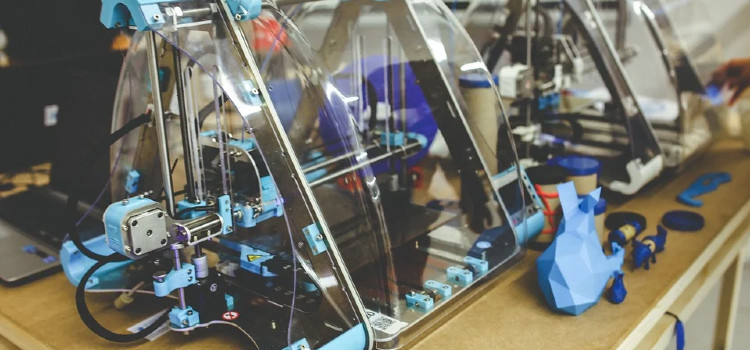3d printing is moving fast and the reason we are so excited about this technology is because it can give us an unprecedented opportunity to share and learn from the best ideas in every field. We want to take you through briefly how 3D printing works and the common 3d printing technologies.
Contents
Stereolithography (SLA)
Stereolithography, or SLA, is a type of 3D printing that creates objects from a liquid resin using different laser wavelengths. The process involves projecting lasers through a vat of liquid photopolymer resin, which hardens when exposed to the laser lights. These layers of resin build up on top of each other until the entire object is complete.
The process is either continuous, producing a horizontal cross-section of the 3D design, or layer-based, where each layer is cured individually before another is added. Depending on the material used and how it’s applied, SLA 3D printing can produce complex items with high levels of accuracy and detail.
The drawback? It’s slow. SLA 3D printers can produce one to five millimeters of an object per hour.
Fused Deposition Modeling (FDM)
Fused deposition modeling (FDM) is a process where material is deposited from an extruder head to create a three-dimensional solid object. This might be done by extruding thermoplastic or wax or other materials.
FDM is the most widely used technology for 3D printers, and you probably have a device that uses this technology in your home.
Instead of using lasers to solidify drops of resin, as with SLA, FDM printers use a heated extruder head to melt thermoplastic filament. The melted plastic is then deposited in layers from the 3D printer nozzle onto a flat build platform and allowed to cool slightly before being laid down on top of previously laid layers.
FDM is a very popular technology in the desktop 3D printing community. It’s relatively inexpensive, and it can be used for a wide variety of applications.
One of the drawbacks is that FDM printers can create parts with less accuracy and detailed surface finish than SLA or other technologies, but this is quickly changing. Some FDM printers now can achieve layer thicknesses of down to 20 microns, which means layers as thin as a human hair.
Selective laser sintering (SLS)
Selective laser sintering (SLS) is a 3D printing process that uses a high power laser beam to selectively heat and bind together the surface of powder particles of gypsum, metal, plastic, or other materials in a layer-by-layer fashion.
With SLS, the printer lays the material down in thin layers to build a solid object, and it’s often used for creating parts as small as one-tenth of a human hair. (Yes, really.)
SLS 3D printing has been around for a long time; it was first launched in the 1980s. But it has only been in the last several years that manufacturers have begun creating parts with a high enough resolution to make them useful for more than prototyping.
The biggest advantage of 3D printing using SLS is speed. As with many 3D printing processes, much of this relies on the hardware’s speed; the faster it lays down material, the faster you can get. Since SLS utilizes layers rather than drops of material, parts are also less prone to warping and deforming due to temperature differences.
SLS is widely used in industry to produce prototypes for testing and evaluation purposes. It’s also used for the creation of small plastic parts and other items made to fit a very narrow range of sizes. Some applications involve removing metal powders from a vat, in which case it is often called selective ferrous sintering (SFS).
SLS 3D printing has a few drawbacks, however. It processes much slower than other 3D printing processes, which can negatively affect the time it takes for a finished part to be completed. It also doesn’t print every layer perfectly; some layers can be slightly mis-aligned or buckle out of shape.
Selective laser melting (SLM)
Selective laser melting (SLM) is related to SLS 3D printing. The process of SLM is very similar to that of SLS, except that instead of using a laser to sinter powdered material, the laser is used to fuse the powder into a solid mass.
This process is also known as direct metal laser sintering (DMLS), and it has been around for about 20 years. Currently, SLM 3D printers are capable of creating parts with a resolution down to 25 microns.
There are a few advantages to using SLM compared to SLS. The speed is similar, and it’s much more suited for applications requiring parts that are very thin and delicate. It’s also much faster than SLS; it can produce parts at speeds as fast as 100 microns per hour.
Like with many other 3D printing technologies, there are some drawbacks. SLM is slower than FDM or SLS, which can have an impact on the time required for a finished part to be completed.
Looking for more fundamental 3dd printer info? Start with these 10 Most Important Questions You Need to Ask Before 3D Printing

